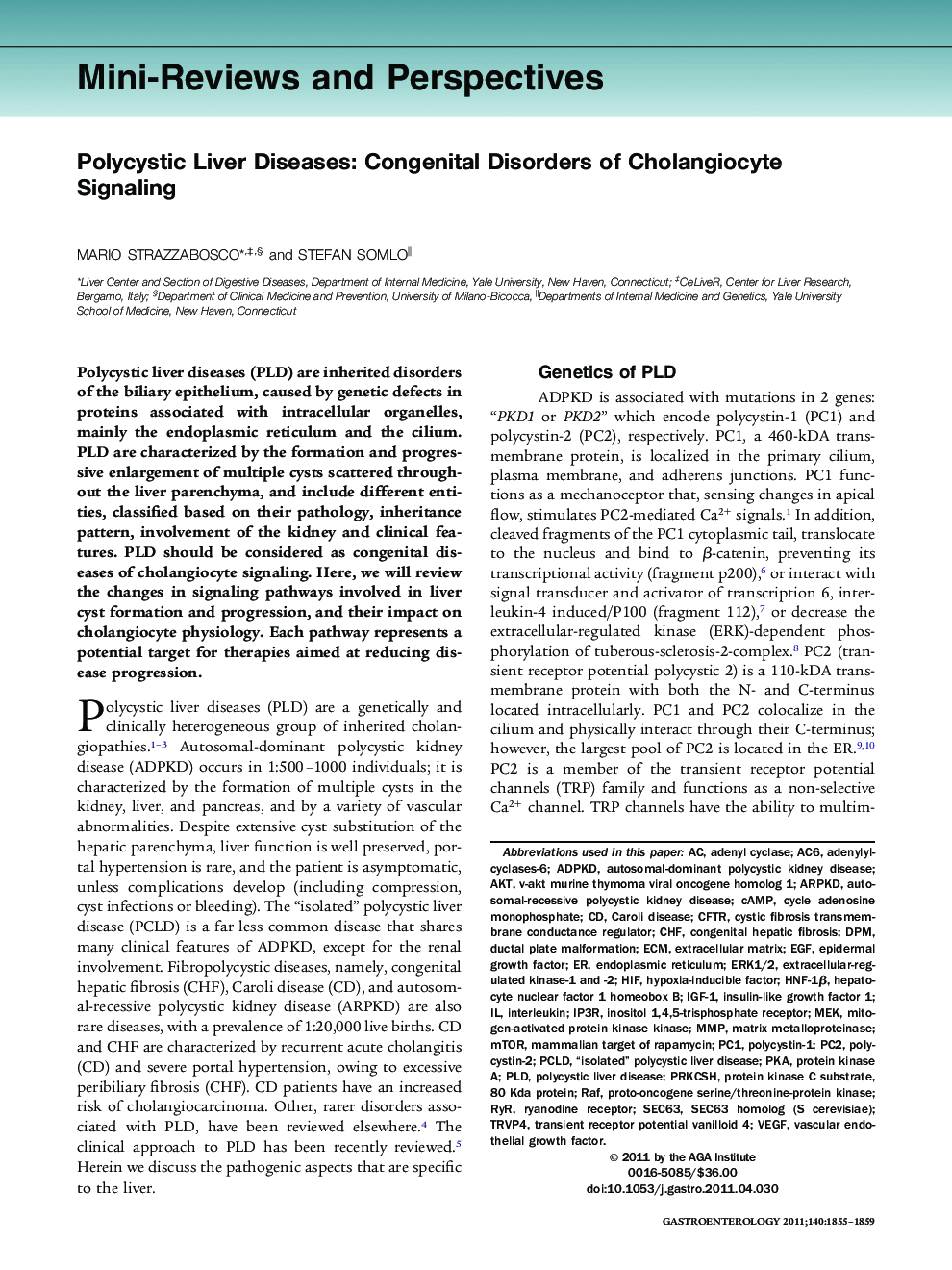| Article ID | Journal | Published Year | Pages | File Type |
|---|---|---|---|---|
| 3292994 | Gastroenterology | 2011 | 6 Pages |
Abstract
Polycystic liver diseases (PLD) are inherited disorders of the biliary epithelium, caused by genetic defects in proteins associated with intracellular organelles, mainly the endoplasmic reticulum and the cilium. PLD are characterized by the formation and progressive enlargement of multiple cysts scattered throughout the liver parenchyma, and include different entities, classified based on their pathology, inheritance pattern, involvement of the kidney and clinical features. PLD should be considered as congenital diseases of cholangiocyte signaling. Here, we will review the changes in signaling pathways involved in liver cyst formation and progression, and their impact on cholangiocyte physiology. Each pathway represents a potential target for therapies aimed at reducing disease progression.
Keywords
ARPKDIGF-1CFTRRyRChFECMIP3RHIFdpmadenyl cyclaseADPKDPCLDSEC63PRKCSHPC2PC1AC6HNF-1βpKaRAFmTOREGFMMPPLDcAMPERK1/2v-akt murine thymoma viral oncogene homolog 1AktinterleukinCaroli diseasepolycystic liver diseaseautosomal-dominant polycystic kidney diseaseautosomal-recessive polycystic kidney diseasecystic fibrosis transmembrane conductance regulatorendoplasmic reticulumepidermal growth factorHypoxia-inducible factorVascular endothelial growth factorVascular Endothelial Growth Factor (VEGF)insulin-like growth factor 1congenital hepatic fibrosisExtracellular matrixmatrix metalloproteinaseMEKDuctal plate malformationmammalian target of rapamycinTransient receptor potential vanilloid 4protein kinase Amitogen-activated protein kinase kinasePolycystin-1Polycystin-2Inositol 1,4,5-trisphosphate receptorRyanodine receptor
Related Topics
Health Sciences
Medicine and Dentistry
Gastroenterology
Authors
Mario Strazzabosco, Stefan Somlo,
